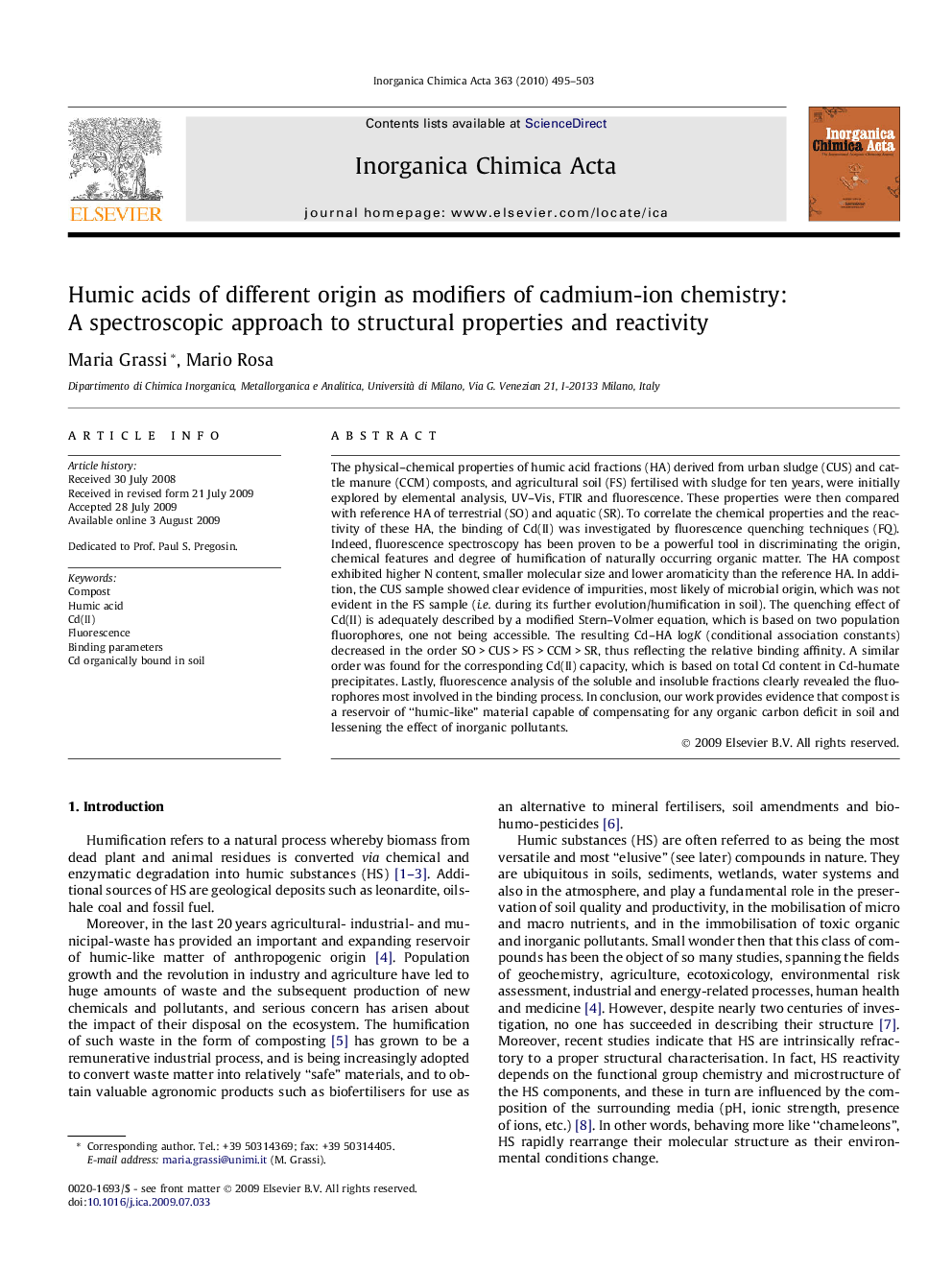| Article ID | Journal | Published Year | Pages | File Type |
|---|---|---|---|---|
| 1312643 | Inorganica Chimica Acta | 2010 | 9 Pages |
The physical–chemical properties of humic acid fractions (HA) derived from urban sludge (CUS) and cattle manure (CCM) composts, and agricultural soil (FS) fertilised with sludge for ten years, were initially explored by elemental analysis, UV–Vis, FTIR and fluorescence. These properties were then compared with reference HA of terrestrial (SO) and aquatic (SR). To correlate the chemical properties and the reactivity of these HA, the binding of Cd(II) was investigated by fluorescence quenching techniques (FQ). Indeed, fluorescence spectroscopy has been proven to be a powerful tool in discriminating the origin, chemical features and degree of humification of naturally occurring organic matter. The HA compost exhibited higher N content, smaller molecular size and lower aromaticity than the reference HA. In addition, the CUS sample showed clear evidence of impurities, most likely of microbial origin, which was not evident in the FS sample (i.e. during its further evolution/humification in soil). The quenching effect of Cd(II) is adequately described by a modified Stern–Volmer equation, which is based on two population fluorophores, one not being accessible. The resulting Cd–HA logK (conditional association constants) decreased in the order SO > CUS > FS > CCM > SR, thus reflecting the relative binding affinity. A similar order was found for the corresponding Cd(II) capacity, which is based on total Cd content in Cd-humate precipitates. Lastly, fluorescence analysis of the soluble and insoluble fractions clearly revealed the fluorophores most involved in the binding process. In conclusion, our work provides evidence that compost is a reservoir of “humic-like” material capable of compensating for any organic carbon deficit in soil and lessening the effect of inorganic pollutants.
Graphical abstractThe structural and Cd-binding properties of humic acid fractions (HA) derived from composted waste were explored and compared with reference aquatic and terrestrial HA. The conditional association constants for Cd-binding process (based on fluorescence quenching data) correlate linearly with Cd capacities (obtained by AAS on Cd-humate adducts), both K and capacity being intermediate to reference HA. Due to a high N content and other distinctive chemical and structural features of organic matter from compost, its use as fertiliser might have specific implications in the speciation of soil containing Cd and other trace metals, which have a high affinity for soft donor groups.Figure optionsDownload full-size imageDownload as PowerPoint slide
